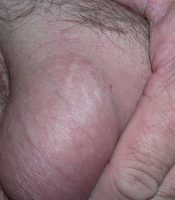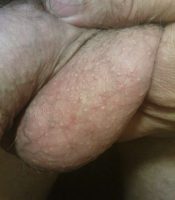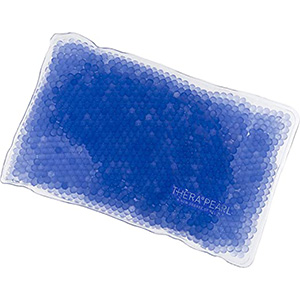One of the frequently asked questions on this site is “My new partner says he has had a vasectomy and we don’t need to use a condom. How do I know if he’s telling me the truth?” The askers of this question are often wondering if there’s any physical method of telling if a man has had a vasectomy just by looking for scars. The answer to this question is “probably not”.
After viewing these photos, you’ll see that, in most situations, the only way to definitely prove your partner is sterile or not is a properly analyzed semen sample.
What you’re looking at
The photographs below show what vasectomy scars look like some years after the procedure. There are three examples of vasectomy scarring on this page demonstrating the effects of two slightly different procedure types.
The first set of pictures show a conventional bilateral scalpel vasectomy, followed by a photo showing healing after a conventional vasectomy with a single midline incision. The final set of images are again of a bilateral scalpel vasectomy.
Bilateral vasectomy scar #1


On the right side (first image) the incision is high up, quite close to the penis. The scar tissue is a slightly raised texture and is lighter in color than the rest of the skin. It is visible in the center of the picture, about a third of the way down you look close enough.
On the left side (second image) the incision happens to be a bit lower. Again, the scar tissue is slightly raised and whiter than the rest of the skin.
Scars from median raphe (midline) incision
Our second contributor had a conventional vasectomy, and one midline incision on the raphe. The raphe is the continuous ridge of tissue that runs down the penis, and round the midline of the scrotum.
The most obvious evidence of the vasectomy is the absence of the raphe in a small section just below the base of the penis. The contributor informs me that the reason the scar appears to be high up is because he was pulling the skin upwards to reveal the area more clearly for the purpose of the photo. It took a couple of emails to sort out where exactly the wound was, so that does demonstrate how difficult it is to see the scars! The photos were taken 7 years after the vasectomy.

The boxed area shows the site of the incision. Note that a small section of the raphe is missing. This is the incision site. It can be seen slightly clearer if you click on the picture for a larger version of the image.
Bilateral vasectomy scarring example #2
Our third contributor had his vasectomy at the age of 17 (1982). This was done in Pakistan as a program to reduce the population. The procedure was done on an operating bus. It was a traditional vasectomy where the vas deferens were cut and a section removed. The doctor injected a solution of potassium permanganate into the ducts for immediate sterility. He did have an increased epididymis on both sides, but the doctor said that this is typical and normal after surgery. Then a year later analysis of the semen contained no sperm. These photographs were taken 30+ years after the vasectomy.


In the first photo, there is a scar visible on the right side. If you click on the image for the larger version you can see a little better. The scar is the horizontal mark that is whiter than the surrounding skin, and in this picture just right of center.
In the second photo (left side) it’s even harder to see. the scarring It is running vertically in the center of the testicle.
Many thanks to our contributors for submitting these pictures and allowing us to use them.



